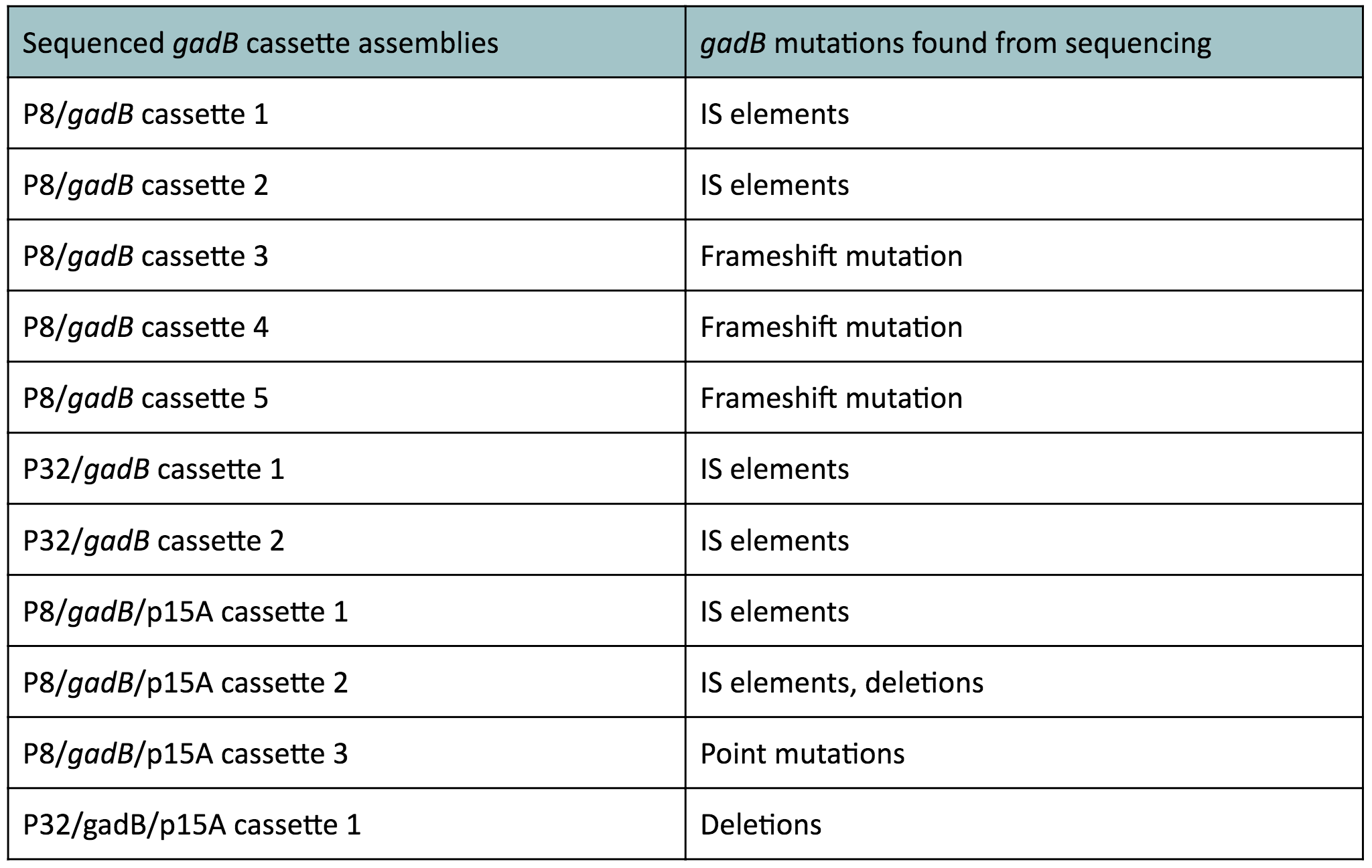Demonstrate
gadB overexpression
In summary, we generated two sets of cassette plasmids to increase gadB expression through the use of constitutive promoters. The first set of cassette plasmids contained the high-copy number ColE1 origin and the other set contained the low-copy number p15A origin. The gadB part plasmid used in these assemblies was sequence-verified. Nonetheless, from these experiments, it was evident that constitutive expression of the gadB gene led to its mutational inactivation.
It is most likely that our cassette transformants were able to overexpress the gadB gene. However, gadB overexpression was metabolically-taxing to these cells, as the glutamate typically used for important cellular growth processes was being allocated towards GABA production, which was a process that did not confer a selective advantage. As a result, subsequent generations of these cells initially overexpressing gadB began to "break" the gadB gene. After several generations, the colonies that appeared on our plates represented only the clones containing the mutationally inactivated gadB gene. These cells were selectively favored in the population, as having a broken gadB gene allowed them to utilize glutamate sources for growth processes, providing a competitive advantage over other cells containing the functional, metabolically-burdensome gadB gene. Observed mutations of the gadB gene in our cassette assemblies, which can be seen in Table 1 below, indirectly demonstrates its intial overepxression in the original population of transformants followed by its mutational inactivation in subsequent surviving generations.


